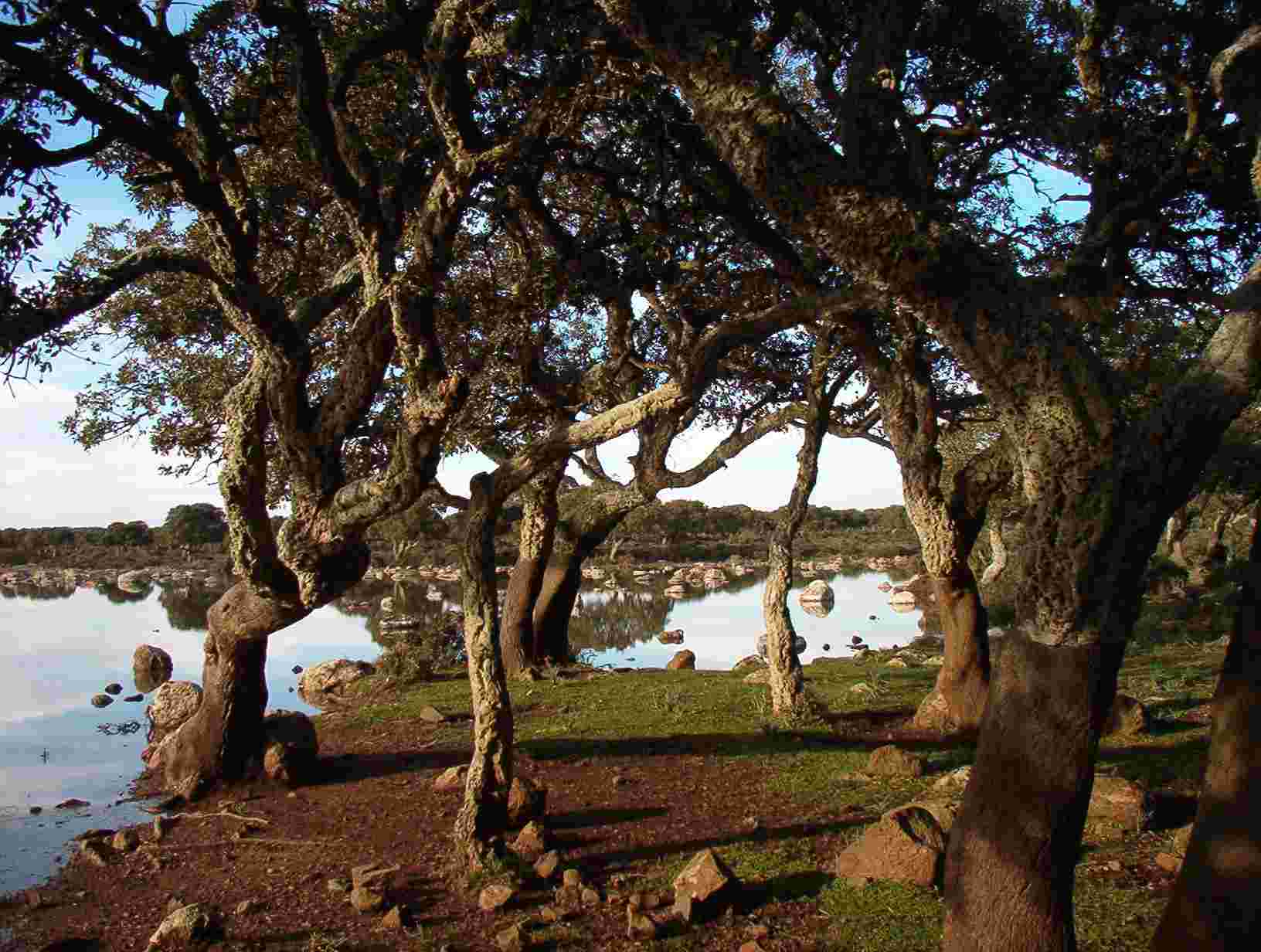
Giara di Gesturi Park
This post is also available in:
 Italiano (Italian)
Italiano (Italian)
The plateau of Giara di Gesturi (a.k.a. “Jara” in Sardinian dialect – a basaltic plateau or the flat hills typical of this area), is a vast territory in the heart of Sardinia that covers some 16 square miles at 1.804 ft of altitude.
The “Giara” was already inhabited by humans in the Neolithic Period (6000-2700 BC), as evidenced by the typical “Domus de Janas”: several caves with rooms carved into the rock and used as burial places. Remains of pottery, flint and obsidian found above the plateau also suggest widespread occupation of this land in that very period.
FLORA
Originally, the plateau was covered by thick woods, but today it features all the typical aspects of a Mediterranean area. There are various types of plants, such as cork oaks (Quercus suber), holm oaks (Quercus ilex), downy oaks (Quercus pubescens), myrtle (Myrtus communis), helichrysum and strawberry trees (Arbutus unedo). It is also possible to find cyclamens and wild orchids, as well as white water-crowfoot (Ranunculus aquatilis).
More than 350 plant species have been identified on the plateau so far, some of them very rare such as Morisia monantha, a very small perennial species that blooms from January to April, with a most prominent golden-yellow flower.
FAUNA
Giara Park is known above all as the place where “Cavallini della Giara” (Equus caballus jarae), the last wild horses in Europe, have found a perfect shelter. These animals are a crossbreed between common horses and ponies; they look quite small with a dark coat and almond-shaped eyes.
In addition to these typical animals, Giara is populated by wild boars, foxes, rabbits, hares and wild cats, as well as several birds that live here or migrate along this very route: hawks, buzzards, partridges, great spotted woodpecker, mallards, storks and black-winged stilts.
In this area, it is also possible to observe the Lepidurus opus Lubbocki, an archaic crustacean, which has remained unchanged for 200 million years: it lives in the “Paulis”, the natural depressions filled with rainwater.
This post is also available in:
 Italiano (Italian)
Italiano (Italian)
Contatti
Via Giovanni Battista Tuveri, 16 - Tuili(VS)
070 9364277
info@parcodellagiara.it


